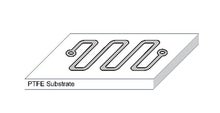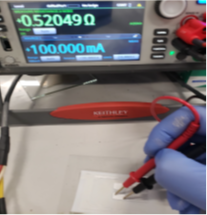Background
Thin films of Polytetrafluoroethylene, PTFE (known by its commercial name Teflon) is known for its high thermal resistivity and environmental stability. It has high melting point (close to 400oC) and flame resistivity, is chemically inert (not affected by majority of solvents) and has high flexural strength. However, due to its hydrophobicity, low coefficient of friction, and low surface energy, conductive metals do not adhere to Teflon. This hinders the use of Teflon coated substrates in a number of applications where a layer of metal is needed on top of the Teflon layer.
Description of the invention
Researchers at the University of Waterloo have created a method that can successfully coat a highly conductive material on Teflon. So far, the research team has successfully printed silver-containing ink on Teflon thin films and created a circuit board. The printed circuit has been successfully tested for electric conductivity. The proposed technology has the potential of revolutionizing high-performance electronics manufacturing among other potential applications.
Advantages
The proposed method:
- is fast and simple
- is applied at low temperature
- does not affect flexibility, electrical or thermal resistive properties of Teflon
- does not melt, burn, or degrade the Teflon substrate
- is high throughput and applicable to sub-mm Teflon sheets
- is green/environment friendly (no need for etching or using dangerous/harsh chemicals, no need for controlled environment)
- can control thickness and roughness
Potential applications
- Consumer electronics – where flexible PCBs/substrates can be Teflon coated to better handle generated heat
- Telecommunications – Teflon coating substrates/PCBs for heat handing in high power applications such as 5G/6G communications and phased array antennas
- Antibacterial submicron- or nano-porous air filters (non-clogging PTEE filters coated with anti bacterial agents such as Cu or TiO2)
- Medical hygiene applications where Teflon coated surfaces of medical devices can impart antibacterial properties by adding a coat of Cu or TiO2
- Hydro- and ice-phobic dispersion


Top: The conceptual design of PCB created on Teflon Substrate
Bottom: The actual PCB on Teflon-Coated substrate being tested.
Reference
10224
Patent status
Patent Pending
Stage of development
Prototype built
Ongoing research
Contact
Scott Inwood
Director of Commercialization
Waterloo Commercialization Office
519-888-4567, ext. 43728
uwaterloo.ca/research